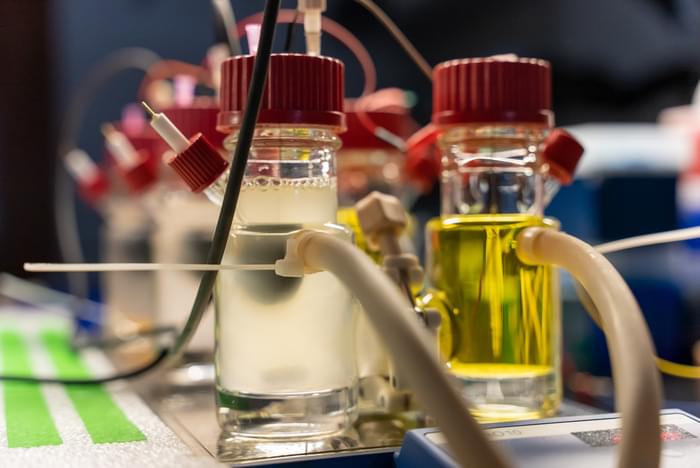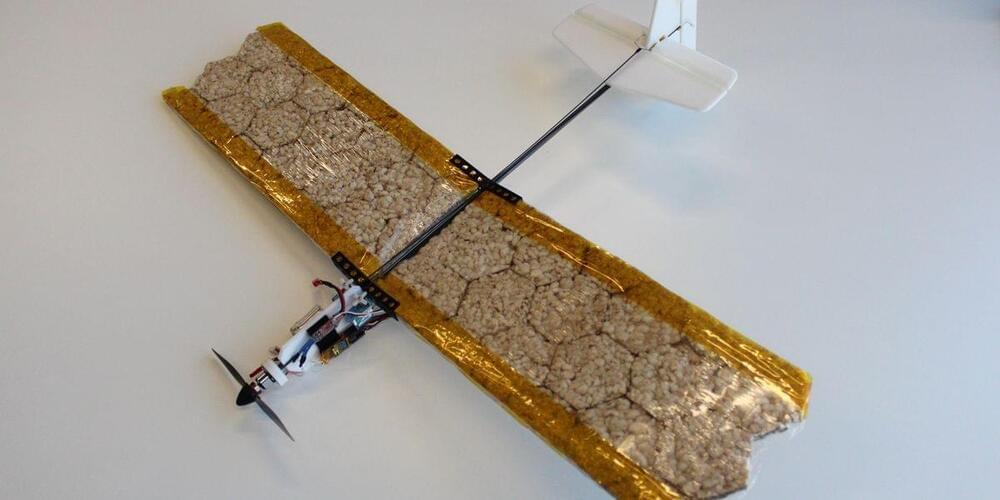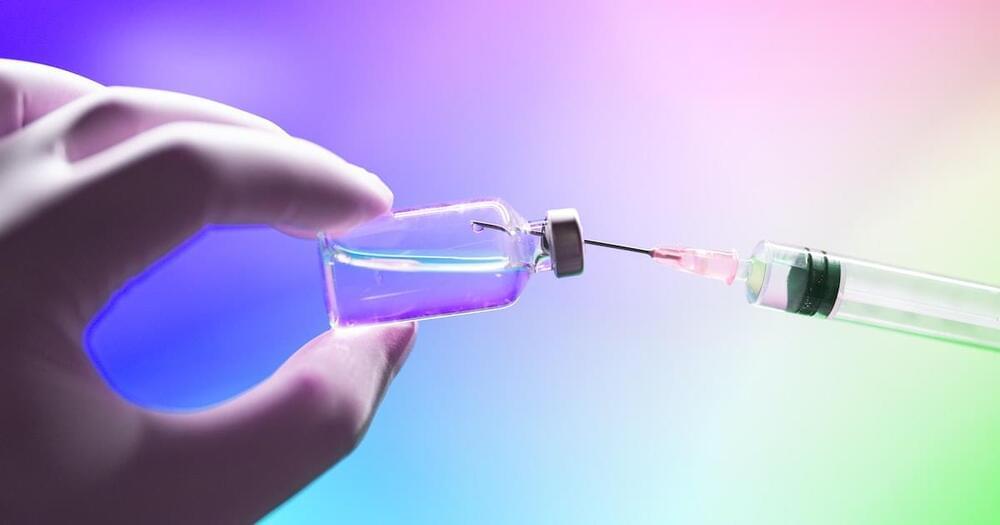Nuclear War?! — We would be one of the first ones to go, but who or what would survive a nuclear war?
Posted on Big Think.


Programmable bacteria attached to electrodes that deliver a electrical signal when the bacteria detect a target contaminant, enables real-time sensing, reports a study from Rice University. The engineered E.coli and electrodes are encapsulated in an agarose capsule to prevent the bacteria from falling off the electrodes. Prototypes developed by the team can detect contaminants in water such as thiosulfate and an endocrine disruptor in under five minutes.

Most delivery drones can only carry about one-third of their mass as payload, because most of their mass is both critical, like wings, and comes in the form of things that are essentially useless to the end user, like wings. But EPFL researchers have invented a drone with wings made from rice cakes.

In the past 30 days, SpaceX has completed 8 orbital launches. If they kept this up for a year, they would be doing 8 12 = 96 which is about their goal for next year. To give you an idea of how fast SpaceX is growing, last year, SpaceX only did 31 launches which was a record for them.
Even more impressive, one of these launches was a Falcon Heavy which is basically 3 Falcon 9’s tied together. So SpaceX completed 10 orbital launches of Falcon 9s in the past 30 days which would be a rate of 120 Falcon 9 orbital launches per year!
A history of orbital rocket launches.


A set of four malicious applications currently available in Google Play, the official store for the Android system, are directing users sites that steal sensitive information or generate ‘pay-per-click’ revenue for the operators.
Some of these sites offer victims to download fake security tools or updates, to trick users into installing the malicious files manually.
At the time of publishing, the apps are still present on Google Play under a developer account called Mobile apps Group, and have a total install count of more than one million.


Brain changes in autism are comprehensive throughout the cerebral cortex rather than just particular areas thought to affect social behavior and language, according to a new UCLA-led study that significantly refines scientists’ understanding of how autism spectrum disorder (ASD) progresses at the molecular level.
The study, published today in Nature, represents a comprehensive effort to characterize ASD at the molecular level. While neurological disorders like Alzheimer’s disease or Parkinson’s disease have well-defined pathologies, autism and other psychiatric disorders have had a lack of defining pathology, making it difficult to develop more effective treatments.
The new study finds brain-wide changes in virtually all of the 11 cortical regions analyzed, regardless of whether they are higher critical association regions—those involved in functions such as reasoning, language, social cognition and mental flexibility—or primary sensory regions.
Thumbnail Inspiration:
https://www.youtube.com/c/DigitalEngine/videos.
Credit:
https://bit.ly/3ggrNND
Many people are scared of artificial intelligence or AI, and it is not hard to see why! The.
advances made in that field of technology are mind-boggling, to say the least! One such scary.
outcome of AI is Google’s AI, which, before it was switched off, ominously revealed one thing.
billions of people have spent a lifetime trying to discover; the purpose of life! What did Google’s.
AI say the purpose of life is? Can AI truly become smarter than us? What does AI becoming.
more intelligent than humans mean? In this video, we dive deep into Google’s Artificial.
Intelligence and what it revealed was the purpose of life before being switched off!
Disclaimer Fair Use:
1. The videos have no negative impact on the original works.
2. The videos we make are used for educational purposes.
3. The videos are transformative in nature.
4. We use only the audio component and tiny pieces of video footage, only if it’s necessary.
DISCLAIMER:
Our channel is purely made for entertainment purposes, based on facts, rumors, and fiction.
Copyright Disclaimer under section 107 of the Copyright Act 1976, allowance is made for “fair use” for purposes such as criticism, comment, news reporting, teaching, scholarship, education, and research. Fair use is a use permitted by copyright statutes that might otherwise be infringing.

Months later, the trio of scientists published a paper that found that a virus, not a novel strain of bacteria like some within the scientific community originally thought, was to blame. Over the following decades, other scientists unfurled the gnarly branches of the large influenza family tree, gathering enough information to formulate a vaccine, which (hopefully) most of us get before every flu season.
But here’s the catch: Influenza is a master shapeshifter. Every year, strains of the virus that infect humans — influenza type A and B — evolve in ways that evade vaccines and, subsequently, our immune systems. This results in uneven vaccine effectiveness from year to year and also undermines efforts to pack a flu shot with a broad, long-lasting immune punch.
But we may have an ace in the hole thanks to mRNA, the same technology used for our Covid-19 vaccines. In a study published Monday in the journal Proceedings of the National Academy of Sciences, researchers at the University of Pennsylvania, Icahn School of Medicine at Mount Sinai, and other institutions have cooked up an mRNA-based influenza vaccine that targets four viral proteins that tend to remain the same across different strains of influenza.